Lottia digitalis (Rathke, 1833)Common name(s): Ribbed limpet, Fingered limpet, Finger limpet |
|
| Synonyms: Collisella digitalis, Acmaea digitalis, Acmaea persona | 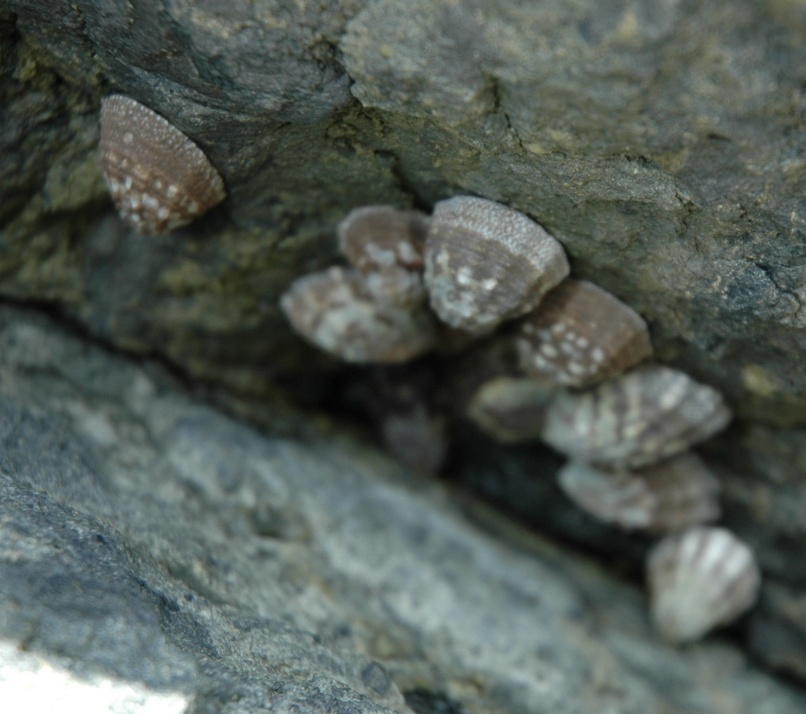 |
| Phylum Mollusca
Class Gastropoda Subclass Prosobranchia Order Patellogastropoda Suborder Nacellina Family Lottiidae |
|
| Lottia digitalis in high intertidal crack, Sares Head. About 2 cm long. | |
| (Photo by: Dave Cowles April, 2005) | |
How to Distinguish from Similar Species: Lottia gigantea grows much larger, is found lower in the intertidal (and mostly south of Oregon), and the apex is not the highest part of the shell. Lottia pelta may also be ridged but the apex is farther back (at about the 1/3 point) and does not usually overhang. It usually also lives lower in the intertidal than does Lottia digitalis. Macclintockia scabra is also strongly scalloped or ridged but the ribs anterior to the apex are just as strong as posterior ribs, and the ribs may actually project as points beyond the margin of the shell. (Not usually north of Oregon). Lottia paradigitalis is very similar to L. digitalis but is not strongly ribbed. South of Pigeon Point, CA its sibling species L. austrodigitalis predominates. The two species can be distinguished primarily by molecular means.
Geographical Range: Aleutian Islands, Aaska to Pigeon Point, California. South of Pigeon Point the dominant species is L. austrodigitalis. L. austrodigitalis seems to be expanding its range to the north at the expense of L. digitalis.
Depth Range: High intertidal
Habitat: Vertical or overhanging rock faces, high intertidal (splash and spray zone), occasionally on goose barnacles Mitella polymerus. Mainly found on exposed coasts.
Biology/Natural History: This is a very common high intertidal limpet along the Pacific coast. Feeds on microscopic algae coating the rocks, and on newly settled barnacles. Often found aggregating in cracks. Many individuals of this species are homing, and have a place on the rock that they return to. They stay fairly close to their home territory (within about 1 meter). An average foray is about 13 cm long. Their shell matches a shell scar on the rocks that they return to, helping deter predation and limit desiccation (they secrete a mucus seal between their shell and the rock when at rest). Limpets living with goose barnacles have a different shell form than do those living on rocks. Those on goose barnacles have a higher shell which is white with dark lines or chevrons. Predators include birds such as black oystercatchers and gulls, and fish such as surfperch, seaperch, and pileperch. They spawn by broadcasting their eggs and sperm, in winter and spring in Oregon. Maximum size is reached in 5 years. The shell can become heavily eroded and pitted by the parasitic fungus Pharcidia balani (Didymella conchae).
Although Lottia digitalis and Lottia ostrodigitalis look nearly identical to one another they exhibit habitat partitioning in the areas of California where they overlap (are sympatric). In sympatric areas the L. digitalis feeding on rocks are generally found lower than L. austrodigitalis feeding on rocks. Both species have two different morphs: One morph is found on gooseneck barnacles (Pollicipes polymerus) and occurs in the mid-intertidal while the other morph feeds on rocks higher in the intertidal.
| Return to: | |||
| Main Page | Alphabetic Index | Systematic Index | Glossary |
References:
Dichotomous Keys:Allen, 1976
Flora and Fairbanks, 1966
Kozloff 1987, 1996
Reish, 1972
Smith and Carlton, 1975
General References:
Brandon
and Rokop, 1985
Brown
and Rovetta, 1996
Brusca
and Brusca, 1978
Harbo,
1997
Harbo,
1999
Hinton,
1987
Kozloff,
1993
McConnaughey
and McConnaughey, 1985
Morris
et al., 1980
Niesen,
1994
Niesen,
1997
O'Clair
and O'Clair, 1998
Ricketts
et al., 1985
Sept,
1999
Scientific Articles:
Crummett, Lisa T. and Douglas J. Eernisse,
2007. Genetic
evidence for the cryptic species pair, Lottia digitalis
and Lottia
austrodigitalis and microhabitat partitioning in
sympatry. Marine
Biology 152: 1-13
General Notes and Observations: Locations, abundances, unusual behaviors:
A student study at Rosario by Pick and Reiswig (2007) found that the black oystercatchers Haematopus bachmani nesting on Northwest Island are being selective in the limpets they capture. Although Lottia digitalis was the most common limpet found in intertidal transects on Northwest Island and were the species found at the highest tide levels so they should have been more available than any other species, they were not the most abundant in shell middens found near the oystercatcher nesting and feeding site. The oystercatchers selected Lottia digitalis less often than expected, and those they did select were near the maximum size range found in the intertidal. The oystercatchers seemed to prefer other, larger limpet species such as Tectura persona, Tectura scutum, and Lottia pelta, all of which were found by chi-square analysis to be in significantly higher numbers in the midden than expected from the intertidal abundance. Whether this selection by the oystercatchers is due to a specific selection of species or simply a selection of the largest individuals present in the intertidal is not known.
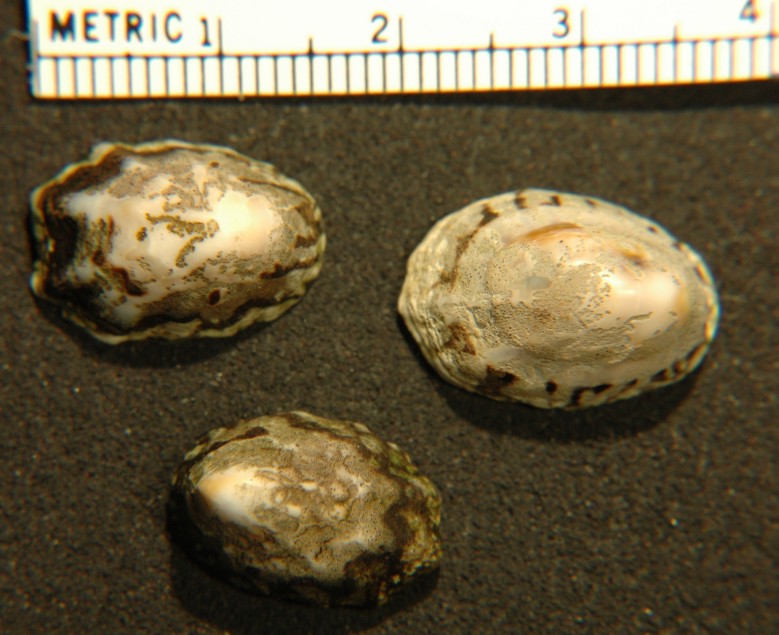
Though these individuals are worn (which is not uncommon), the ridges
which are more prominent on the posterior end can still be seen if
studied
carefully.
The two upper individuals have the anterior end to the right, while
in the lower individual anterior is to the left.
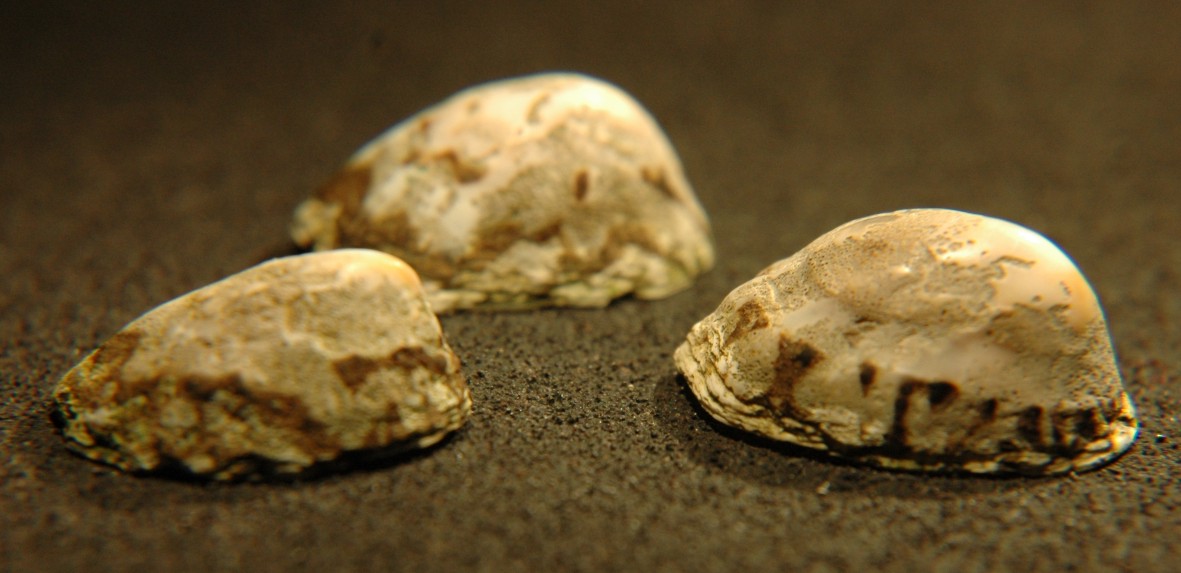
Lottia digitalis is a fairly tall limpet with the
apex far forward
(in the anterior 1/4 of the shell's length). In some
individuals
(not these) it actually overhangs the front of the shell.

The horseshoe-shaped scar, with the open end to the anterior (right)
can be clearly seen in this shell. Note also the brown apical
blotch
(which in this individual is mostly behind the apex)
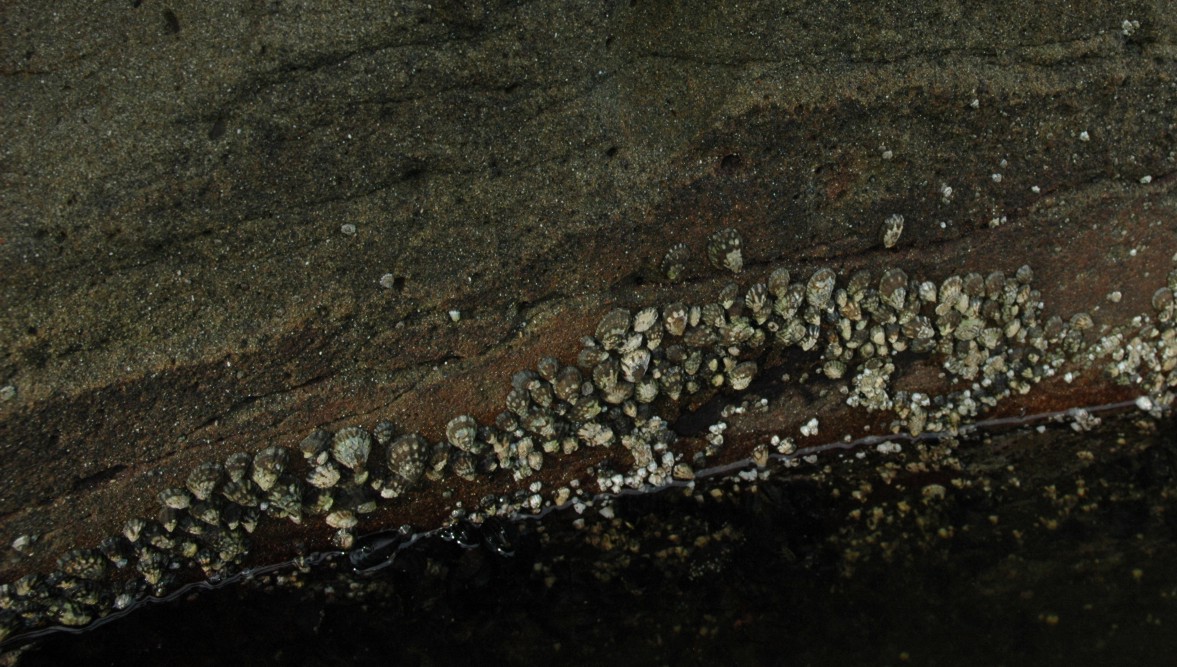
This dense aggregation of individuals is next to a very high tide pool
at Beach #4, Olympic Peninsula.
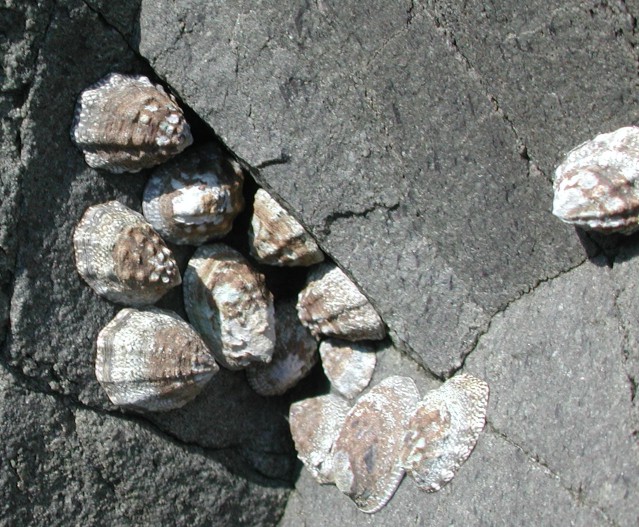
This aggregation was on a vertical rock surface, upper midlittoral,
Swirl Rocks.
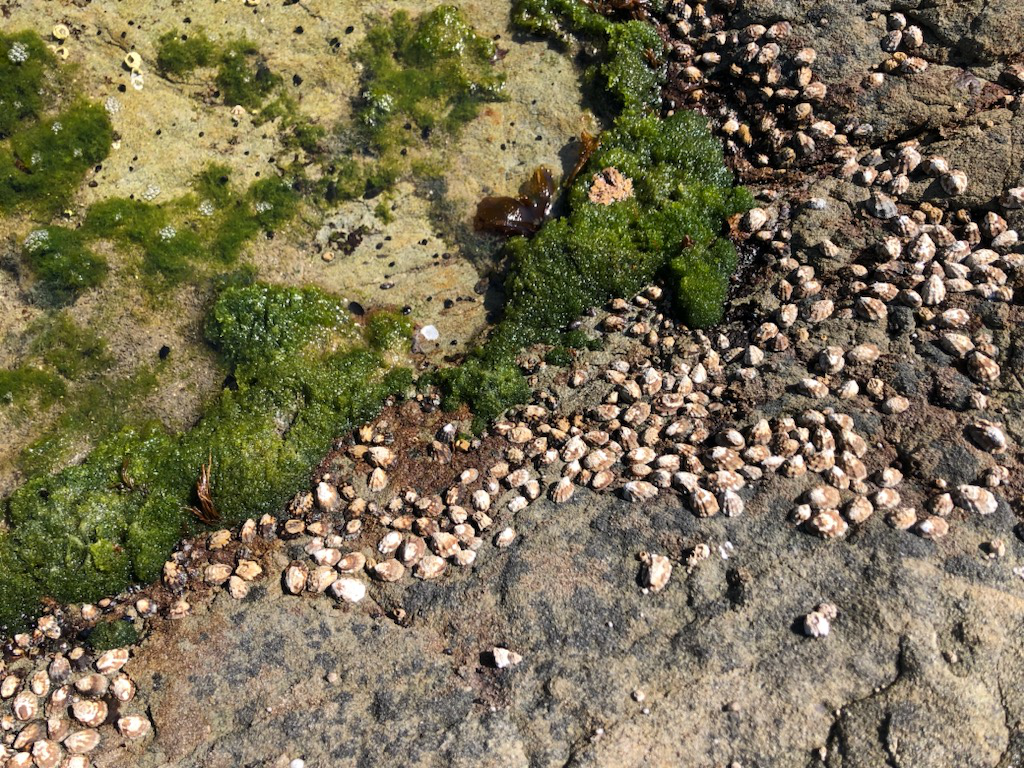
This aggregation is in the intertidal at Rialto Beach. Photo by Dave Cowles, July 2023
Authors and Editors of Page:
Dave Cowles (2005): Created original page
My thanks to Ryan P. Kelly for updated information on this page.